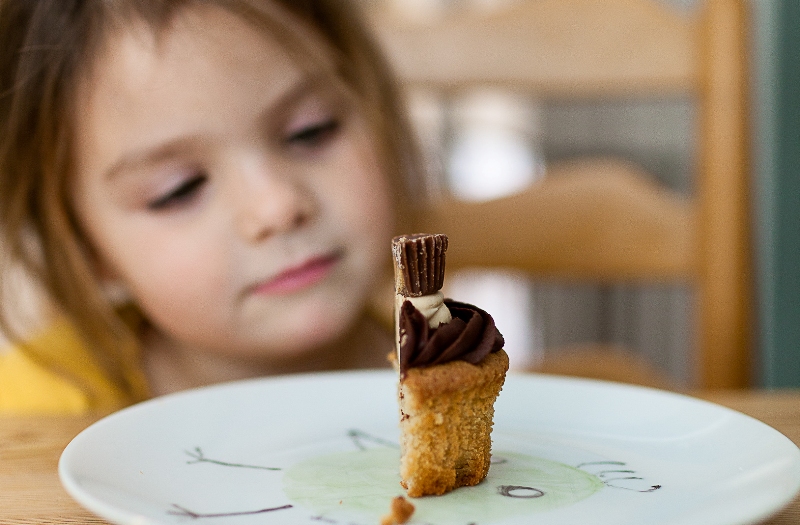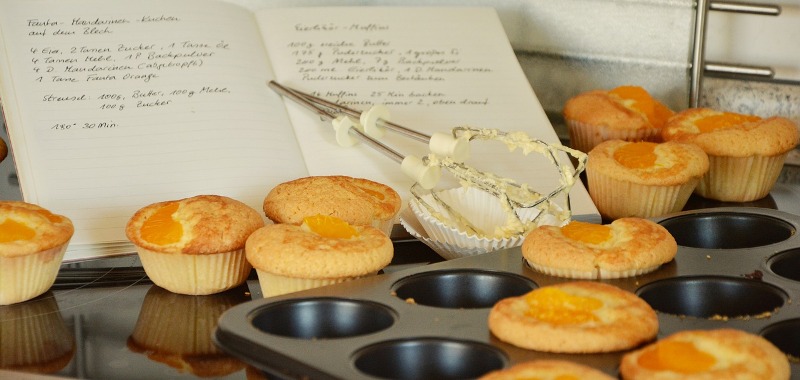Celiac Disease, a digestive and autoimmune disorder that causes an intolerance of gluten protein, affects 1% of the population of Europe. It’s a disease that makes the body respond with an immune reaction to consumed gluten. It can lead to the chronic inflammation or the degeneration and damage of the small intestine. It sounds terrifying, but nowadays the market is full of products that help people with this disease function normally every day. What should we do, however, if a child suffers from Celiac Disease? Don’t panic, that’s the key!

We have the diagnosis. What now?
Once we know for certain that a child suffers from Celiac Disease, the reaction is usually twofold. First, we’re glad that we finally know what’s wrong with our child. Then we think about what this means and start wondering what to cook for them. Zuzana Guzmická, the founder of www.bezlepkovyzivot.sk (a website all about life without gluten), says that we shouldn’t panic. She suffers from Celiac Disease too and claims that nowadays, it’s not a catastrophe. Don’t pity yourself and try to look at it as a change of lifestyle.
Step 1: Studying and preparing
Everyone fears the unknown, so try to learn as much as you can about Celiac Disease and gluten-free food. It will take some time but preparing will help you include gluten-free food into your diet without many difficulties. When diagnosed with Celiac Disease, it’s not enough to reduce our gluten intake. We must completely stop eating it.
Celiac Disease isn’t just about flour! Many people stop eating classic ‘white’ or spelt flour but their health problems remain. The reason for this is the intake of ‘hidden’ gluten. Gluten is often times present in jams, chocolate, yogurt, ketchup, mustard, vinegar, some sauces or drinks, etc. The main rule here is to always read food labels properly.
Be cautious around medication! When buying vitamins or probiotics (which Celiac sufferers often consume to lessen the symptoms), don’t forget to tell your pharmacist that you suffer from this disease because up to 50% of probiotics contain gluten.
Step 2: Tell the people around you
“It’s very important that your family and people you come into contact with know about the disease. Don’t forget to inform your kindergarten or school, as well as interest group leaders. Schools don’t usually cook gluten-free, even though they might claim it, so pack your child’s lunch by yourself. Talk to the teacher and explain that even a little bit of gluten is bad,” Zuzana from www.bezlepkovyzivot.sk advises.
Sit down with the members of your family and explain to them what Celiac Disease is and which foods your child can and can’t eat. Write down a list of ‘allowed’ foods for the grandparents, so they’re always sure what to give their grandchild. If your school or kindergarten doesn’t have the option of cooking gluten-free food, prepare to spend more time in the kitchen because you’ll have to make your child’s lunch yourself.
Step 3: Get a medical examination
Celiac Disease is hereditary, which means that parents and siblings may have it too. “It’s necessary that all first-degree relatives get examined for Celiac Disease,” Zuzana warns. Don’t put off the examination. You may feel fine, but the symptoms aren’t the same in everyone.
Step 4: Talk to your child
Communicating with your child is one of the most important steps. If your child is a bit older, don’t hide the disease from them. Quite the contrary! Explain the risks and why they have to be careful about what they eat during the day. Assure them that if they’re careful in their diet, nothing bad can happen. You can also include them into the process of preparing food. Try to make it a fun time spent together.
If your child is younger, explain to them that they can’t eat the same things their friends from kindergarten eat. You can help your child adjust to the new situation, too. Ask their kindergarten to give you next week’s lunch menu and prepare the same meals for your child, of course, all gluten-free so they can eat what their friends eat. You can give them some gluten-free bread for breakfast.
Some parents go even further than that and change their own diet. Zuzana advises against this, however. “I think that parents should definitely limit gluten in the kitchen so that their child isn’t in constant contact with it and doesn’t feel tempted to eat it. Parents should never change to a gluten-free diet themselves, however, because they aren’t suffering from Celiac Disease and need to have some gluten in their food.”

Step 5: Stock up the kitchen and make preparations
Stock up on gluten-free products. Nowadays, you’ll find a gluten-free aisle in almost every supermarket. If you want a larger variety of products, look for bio shops and drugstores that offer gluten-free cosmetics. If you’re having trouble finding something in a store, you can order it from the internet.
Reserve a separate cabinet for gluten-free food. We also advise that you get a separate mat for cutting, new knives and spoons, new frying pan, etc. to use only when cooking gluten-free. Remember that the table you cook on must be clean and that you have to wash the knife after cutting normal bread.

Step 6: Apply for a Disabled Status Identification Card
Celiac Disease is a disease that falls under the specifications of the Disabled Status Identification Card (Slovak: preukaz ZŤP / ŤZP). To get this card, you will need a medical report from a specialist, the Disabled Status Identification Card application form, and the child’s birth certificate.
Zuzka’s gluten-free coconut and banana pancakes
A gluten-free diet doesn’t mean that you can’t eat sweets and treats. Try this amazing gluten-free pancake recipe. They’re so good that you’ll want to steal a bite from your child.
Ingredients for 2 pancakes:
- 1 banana
- 1 egg
- 3 tbsp of grated coconut
- gluten-free butter or coconut oil (without flavor)
- fruit, honey or bio-maple syrup to sprinkle on top
Instructions:
Mix the banana or crush it with a fork. Add the egg and coconut and mix it together. Melt the butter (or coconut oil) in a frying pan and fry the pancakes from both sides. The pancakes should be thicker (like American pancakes). You can sprinkle fruit, honey or syrup on top.